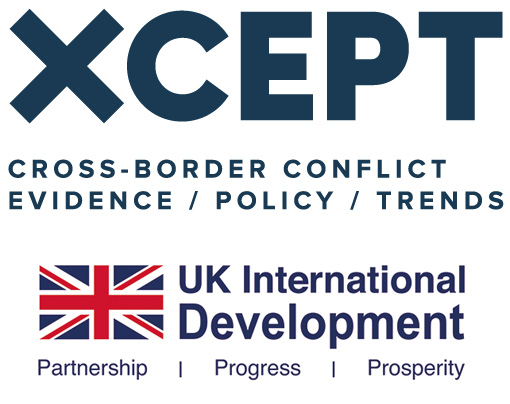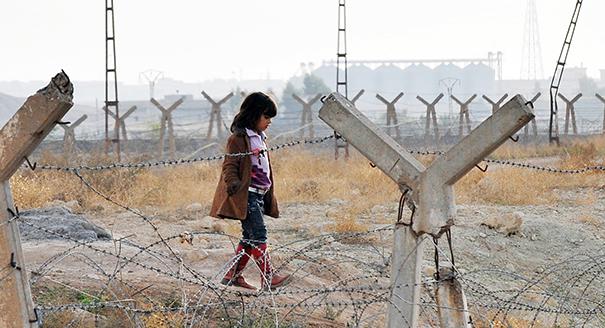Eleven years after the beginning of the uprising in Syria and the outbreak of multiple internal wars that followed, the Syrian conflict has today become confined to an arc linking the northeast of the country to the northwest. This shift in the nature of the conflict, which has moved from Syria’s hinterland to the borderland with Turkey, has created a new battlefield for the main players in the conflict.
In this region, security, demographics, and economic activity comprise a single ecosystem along the entire border. At the same time, the multiple zones that have emerged from the conflict are contradictory in terms of the political objectives being pursued in each of them. This makes the entire border region fragile and subject to military escalations at any moment. With no end in sight to the war, the area will remain a source of concern due to its potential to produce new rounds of violence.
The security order along the Turkish-Syrian border has roots dating back to the summer of 2012. Turkey’s facilitation of the influx of weapons to groups opposed to the Assad regime eventually led these groups to take control of significant portions of northern Syria, including half the city of Aleppo, from which the regime withdrew in June of that year. It also led the regime to turn the tables on Turkey by handing over the Kurdish border towns of Afrin, Kobani, and Amouda to the Kurdish-dominated People’s Protection Units (YPG), the military wing of the Democratic Union Party. Both operate under the umbrella of the Kurdistan Workers Party (PKK), which has been engaged in a conflict with Turkey since the end of the 1970s, with the aim of achieving self-governance in eastern Turkey. These border areas turned into active fronts during the war in Syria, and along with the rise of jihadi groups there, came to be characterized by major social reengineering involving local and regional actors.
The strategic choices of the Turkish government and the Syrian regime have turned Syria’s northern border region into one of the Middle East’s most heavily armed areas, if not the most heavily armed. Hundreds of thousands of fighters are deployed in Idlib, Afrin, and the areas east of the Euphrates River, in addition to regime forces and Iran-backed militias stationed along a line south of the Euphrates. The paradox is that without the presence of small U.S. bases, Turkish troops, and Russian military units, the north would be in a state of continuous war. However, the presence of these international forces has, instead, made the area subject to bargaining, specifically between Russia and Turkey.
The Russians, like the Assad regime, are betting that in time the situation will lead to an accord on border security that is based on the Adana Agreement of 1998 between Syria and Turkey. That agreement gave the Turkish military the right to enter Syrian territory to a distance of up to 5 kilometers to pursue PKK combatants when required. Turkey has implemented the agreement in practice during the Syrian conflict, but the security relationship between Turkey and the Assad regime no longer exists. Today, to restore such a relationship, the Turks must allow the regime and Russia to defeat Hay’at Tahrir al-Sham in the west in Idlib, in exchange for security guarantees that the Syrian Democratic Forces (SDF), an alliance of armed groups dominated by the YPG, will be dismantled in the east.
But the Assad regime is not capable of carrying out such an agreement, due to variety of factors, including corruption, a lack of resources, the migration of technocrats, and the diminished capacity of state institutions because of the war. In southern Syria, the regime has been able to take control of the entire border with Jordan, and with Russian backing has dismantled the military and civilian structures of the opposition, forcing many residents to flee to the north. This has totally disabled the system of governance that the rebels had put in place in the south and turned the area into several security zones. In the north, the picture is more complicated. There are millions of civilians present and economic activity along the entire border. A military operation would lead to a massive humanitarian disaster along the border with Turkey, which was not the case with Jordan.
Today, the conflict in Syria is confined to northern Syria, while all the competing local and regional actors are trying to bolster their positions ahead of the coming phase. Whatever characterizes this phase—whether political arrangements or military escalations—the conflict has created a situation that both the Assad regime and Turkey are trying to change. The regime seeks to advance in the northwest and retake Idlib from Hay’at Tahrir al-Sham, while Turkey wants to do the same in the northeast and defeat the SDF. Because the northern arc of Syria has become subject to perpetual instability, and because neither Turkey nor the Assad regime will be satisfied until they can secure their military objectives, it will be extremely difficult for the parties to reach mutual understandings in the near term.







